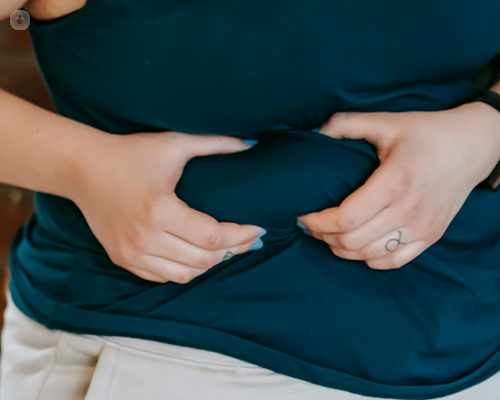What you need to know about gallstone removal
Escrito por:Gallstones are hard, stone-like structures that are the size of a grain of sand or as wide as a large coin that form in the gallbladder, which is an organ in the abdomen that is used to store and release bile that breaks down fats in the digestive system. The stones don’t always need treatment, but when necessary, then surgery is conducted to remove the entire gallbladder. In this article, a leading consultant laparoscopic surgeon explains how gallstones are treated.

What are gallstones?
Gallstones are made of excess cholesterol (or sometimes other substances like bilirubin), and there tend to be multiple present at a time.
Gallstones aren’t always noticed when present, because they do not necessarily cause symptoms. The main symptom that can arise with gallstones is abdominal pain (biliary colic), which is caused by a gallstone becoming stuck, such as in the in the cystic duct (cholecystitis) or in the pancreatic duct which causes an inflammation of the pancreas (pancreatitis). The pain starts in the upper-right portion of the abdomen and then will radiate to the shoulder. Other complications include nausea, fever, and jaundice.
How are gallstones treated?
In the case of these complications, then surgery will be considered to remove the gallbladder entirely. It is not a necessary organ, as the bile it stores is actually made in the liver, so bodily function should still be normal. This procedure is called a cholecystectomy, and it can be performed openly or laparoscopically, which is more common. Laparoscopy is preferred because it is minimally invasive, which means less blood loss and a shorter recovery time for the patient.
In a laparoscopic cholecystectomy, the surgeon will make small incisions in the abdomen around the belly button. Using instruments and the long, thin camera called a laparoscope, they will access the organs via the incisions to separate the gallbladder from the liver, bile ducts, and surrounding blood vessels. The incisions are sealed with sutures, surgical staples, or surgical tape and dressed.
What happens after gallbladder surgery?
The procedure is short, and performed under a general anaesthetic. The patient is monitored until the anaesthesia fully wears off and they are lucid. They may be prescribed painkillers to manage expected discomfort. Afterwards, the patient will need to follow a low-fat diet as the body adjusts to the absence of the gallbladder, and they might experience bloating, flatulence, and diarrhoea, but this will subside after a few weeks.
Recovery time for an open surgery, it can take up to eight weeks, but a laparoscopic procedure will be two weeks maximum. Patients are encouraged to not participate into physically strenuous activities whilst they heal, but they should be able to return to work or school within a few weeks.
If you are having abdominal pain and believe you are suffering from gallstones, you can consult with a specialist via Top Doctors.


